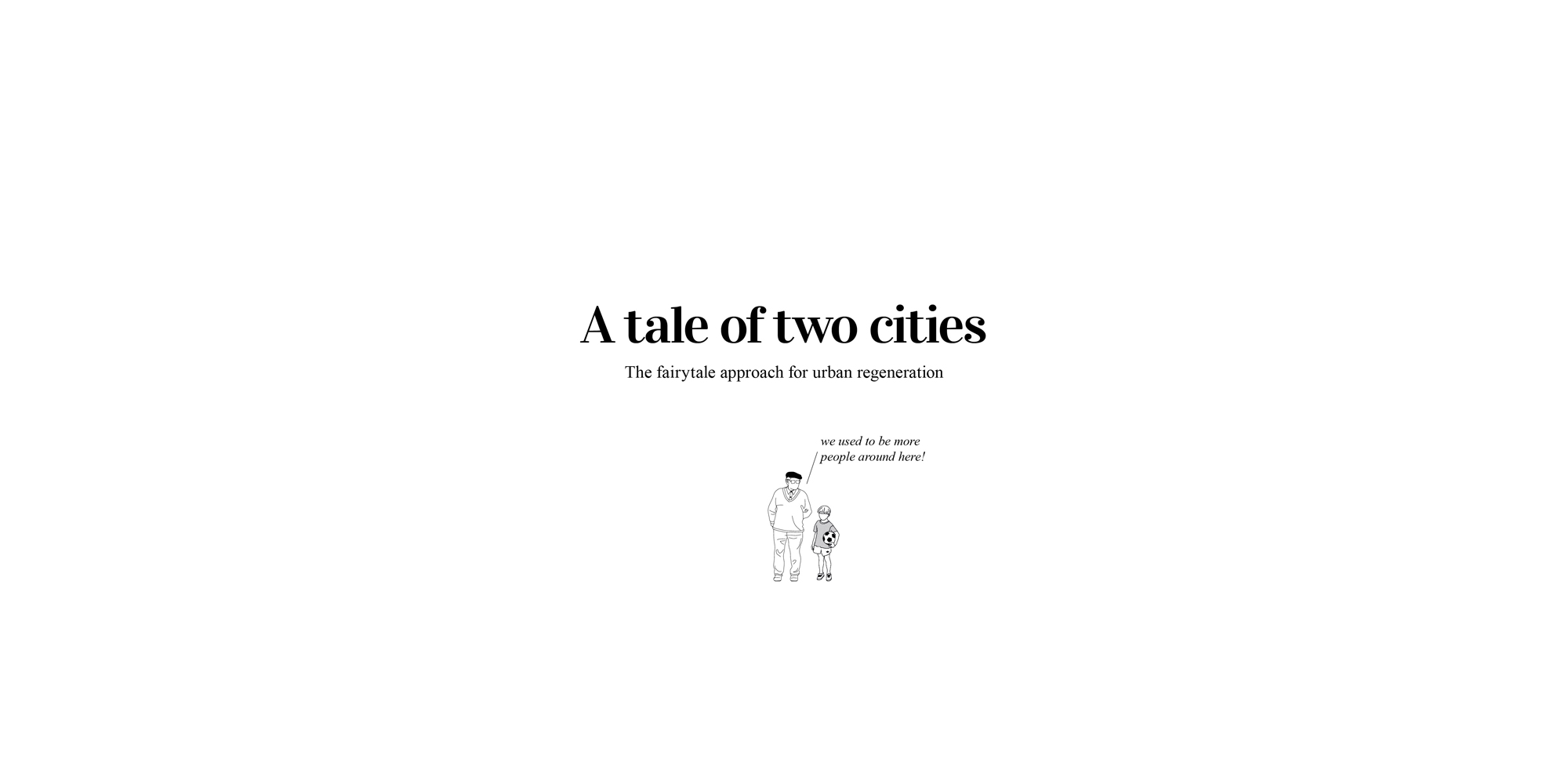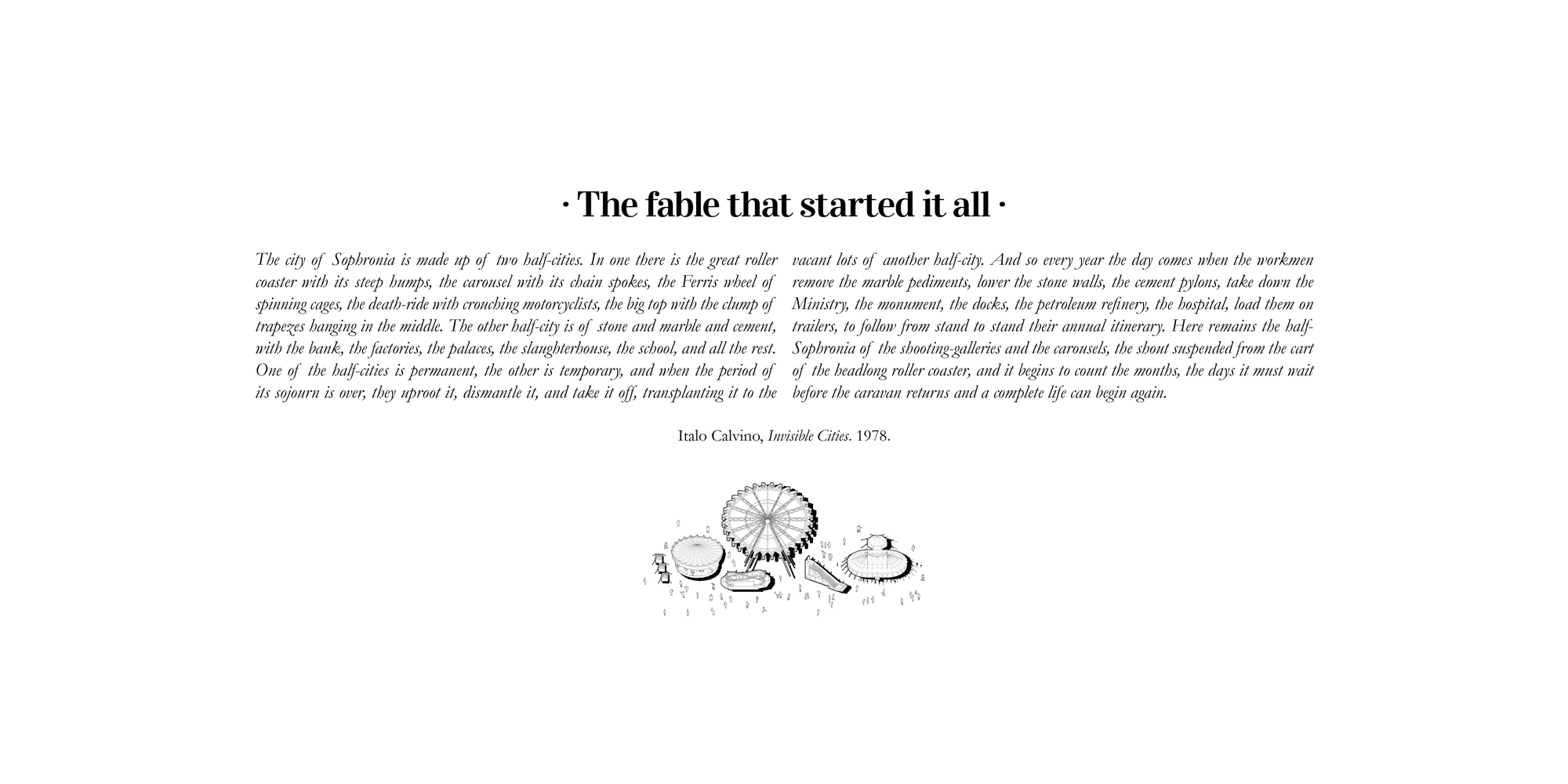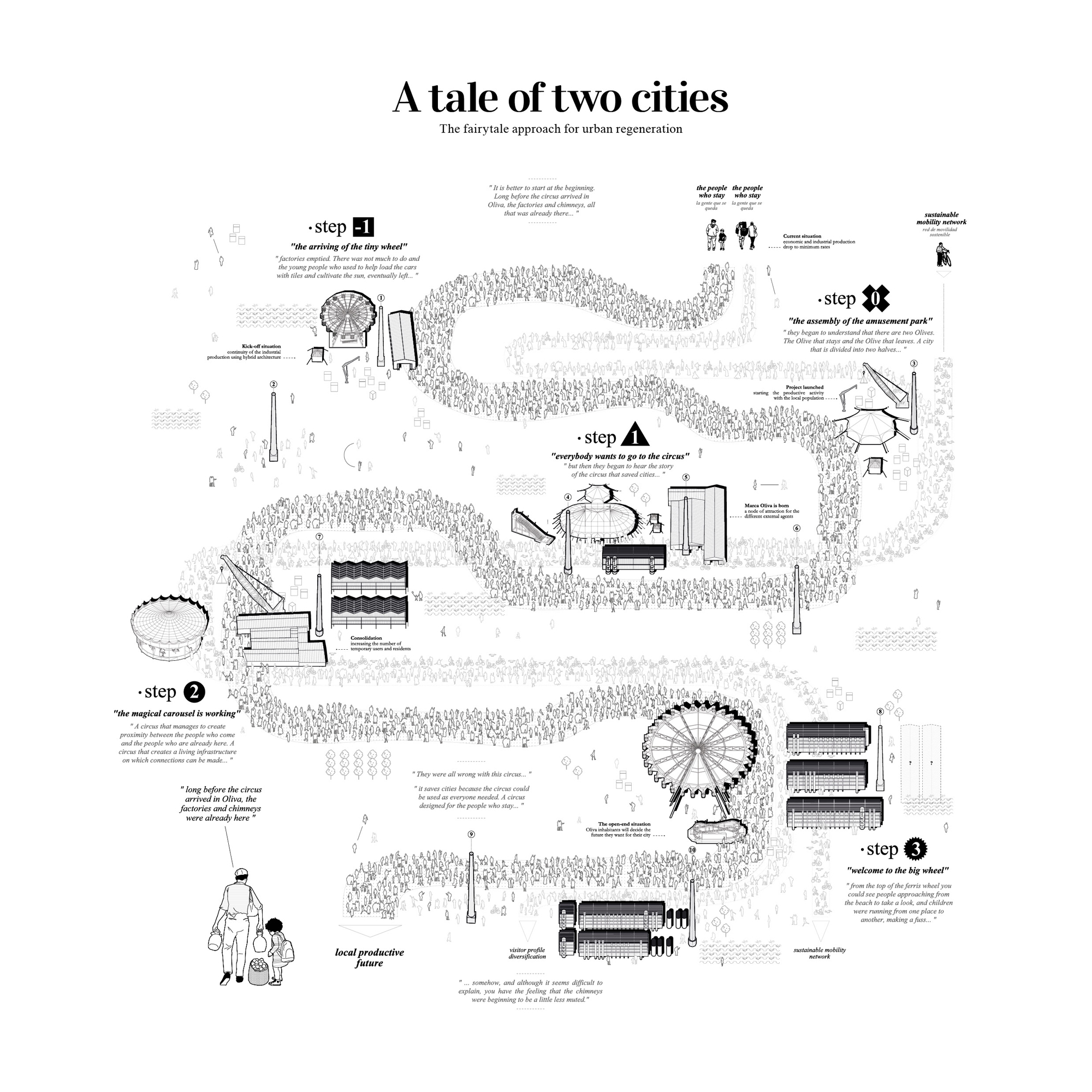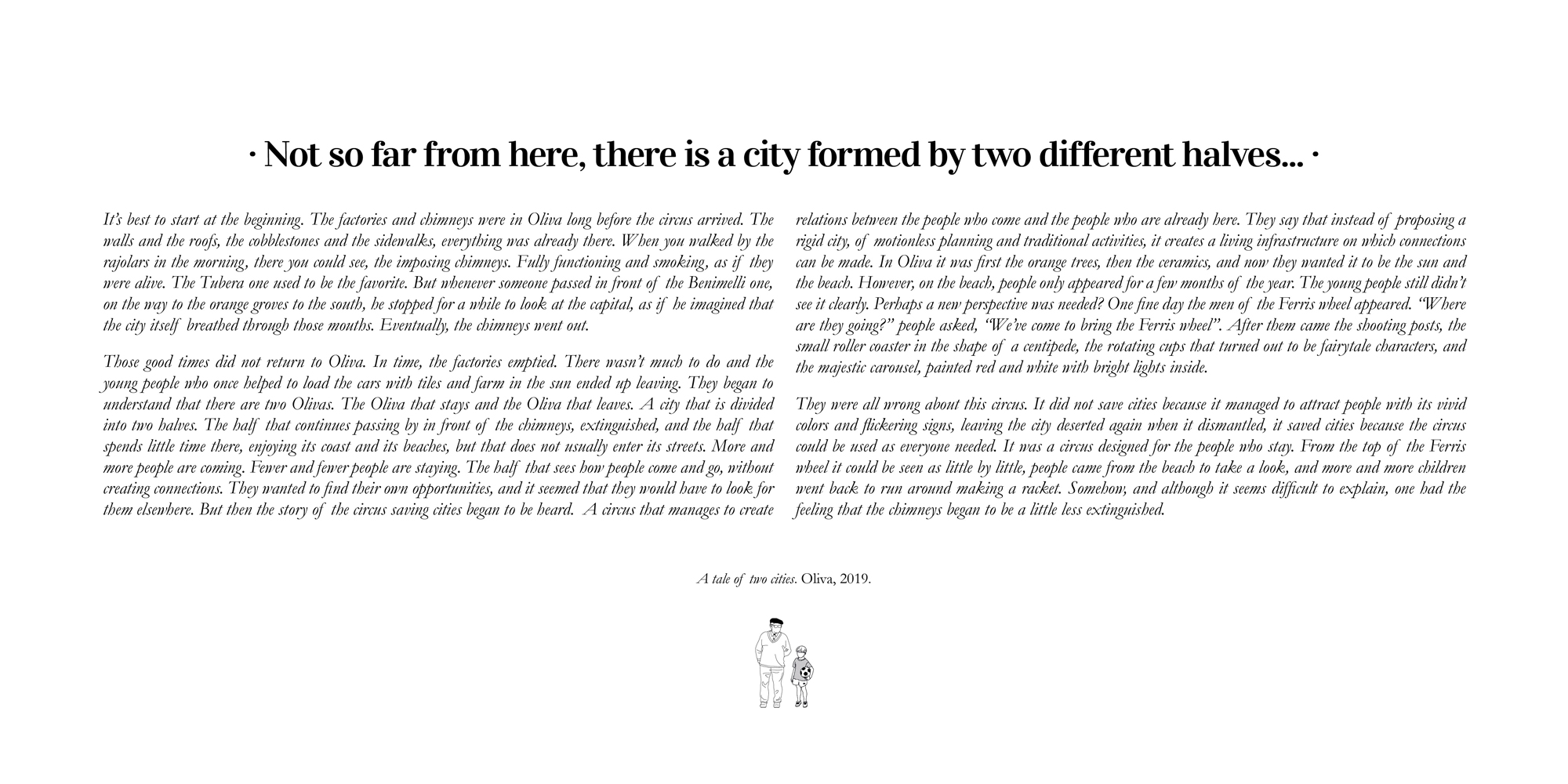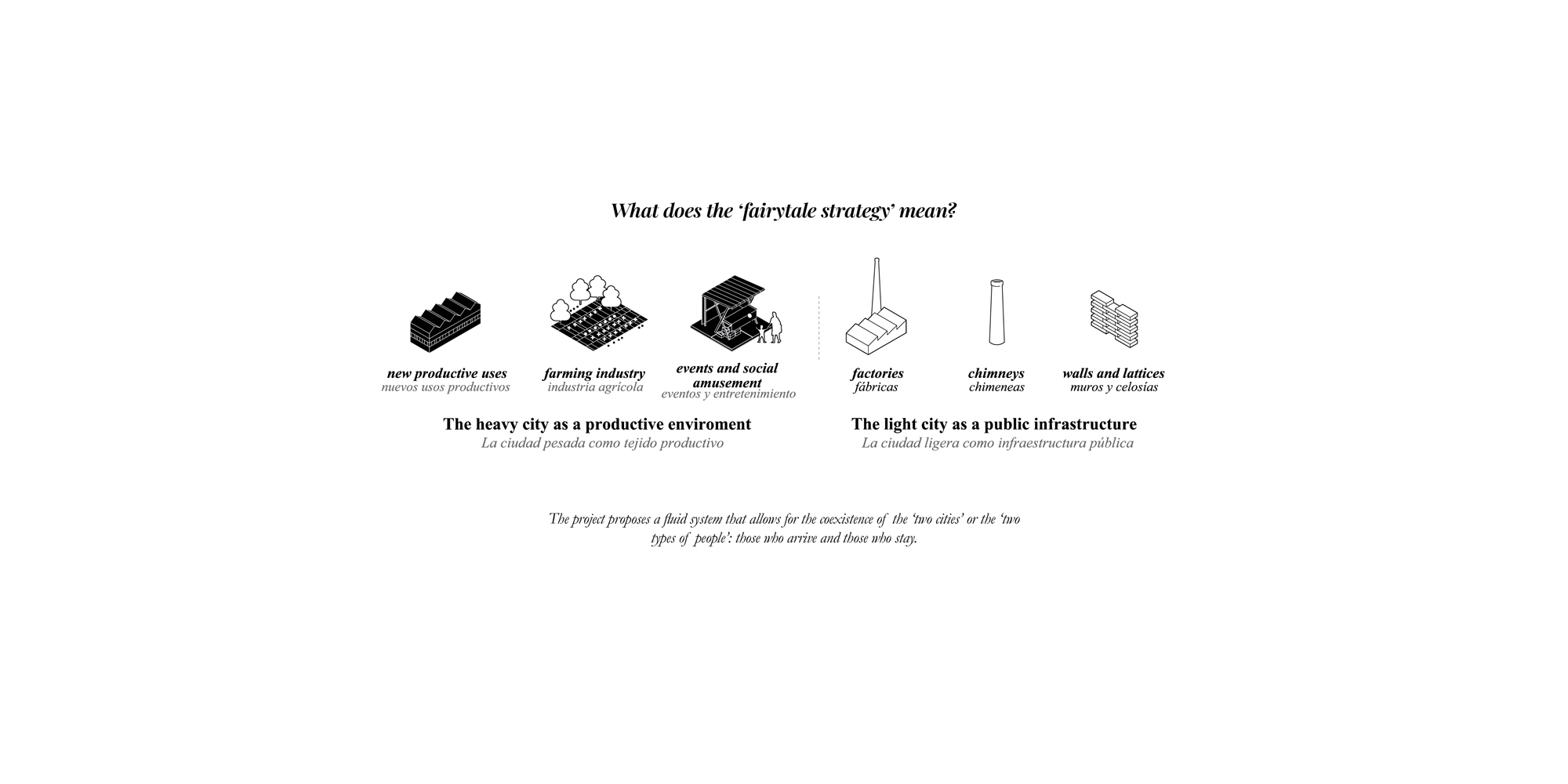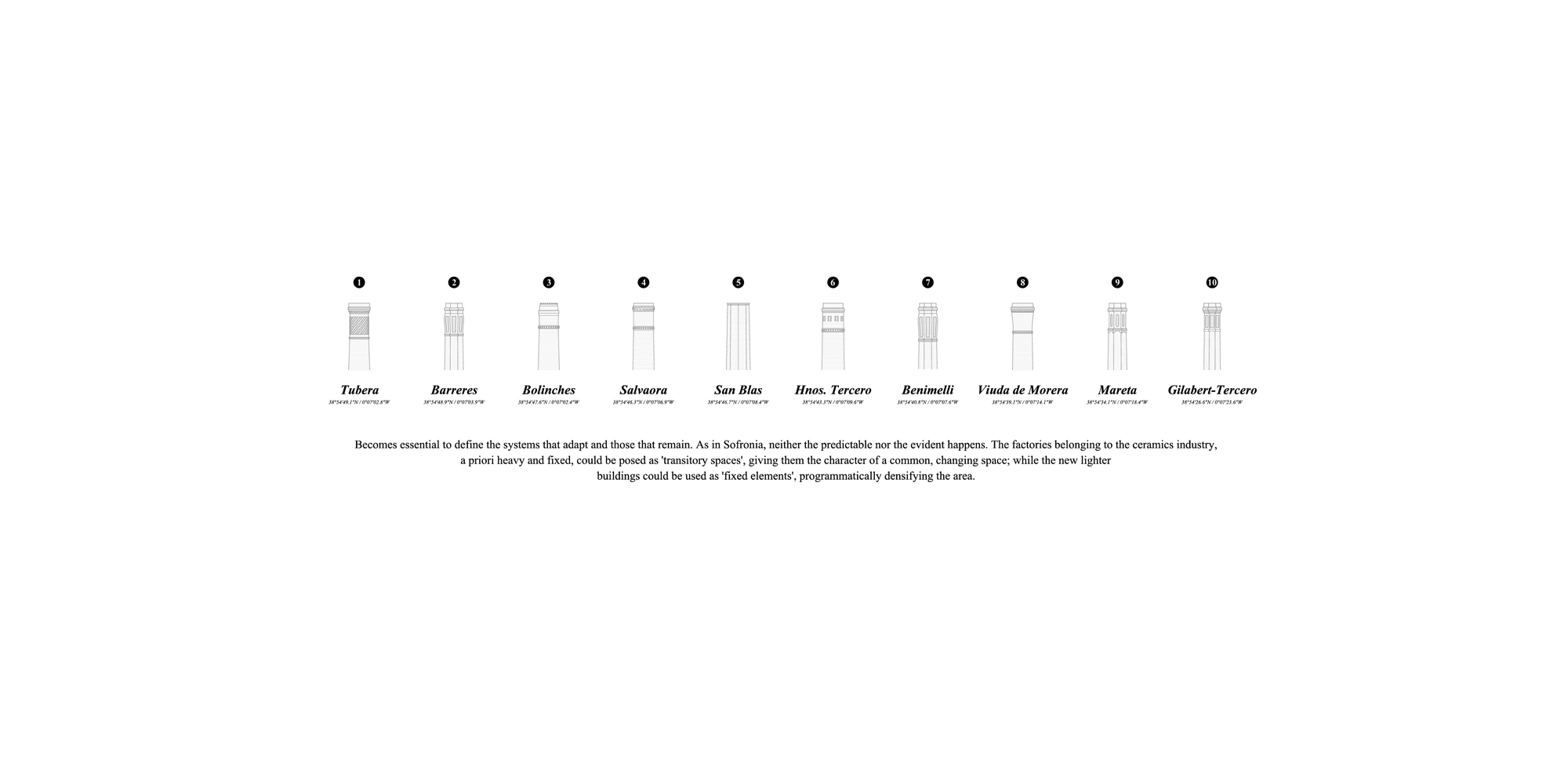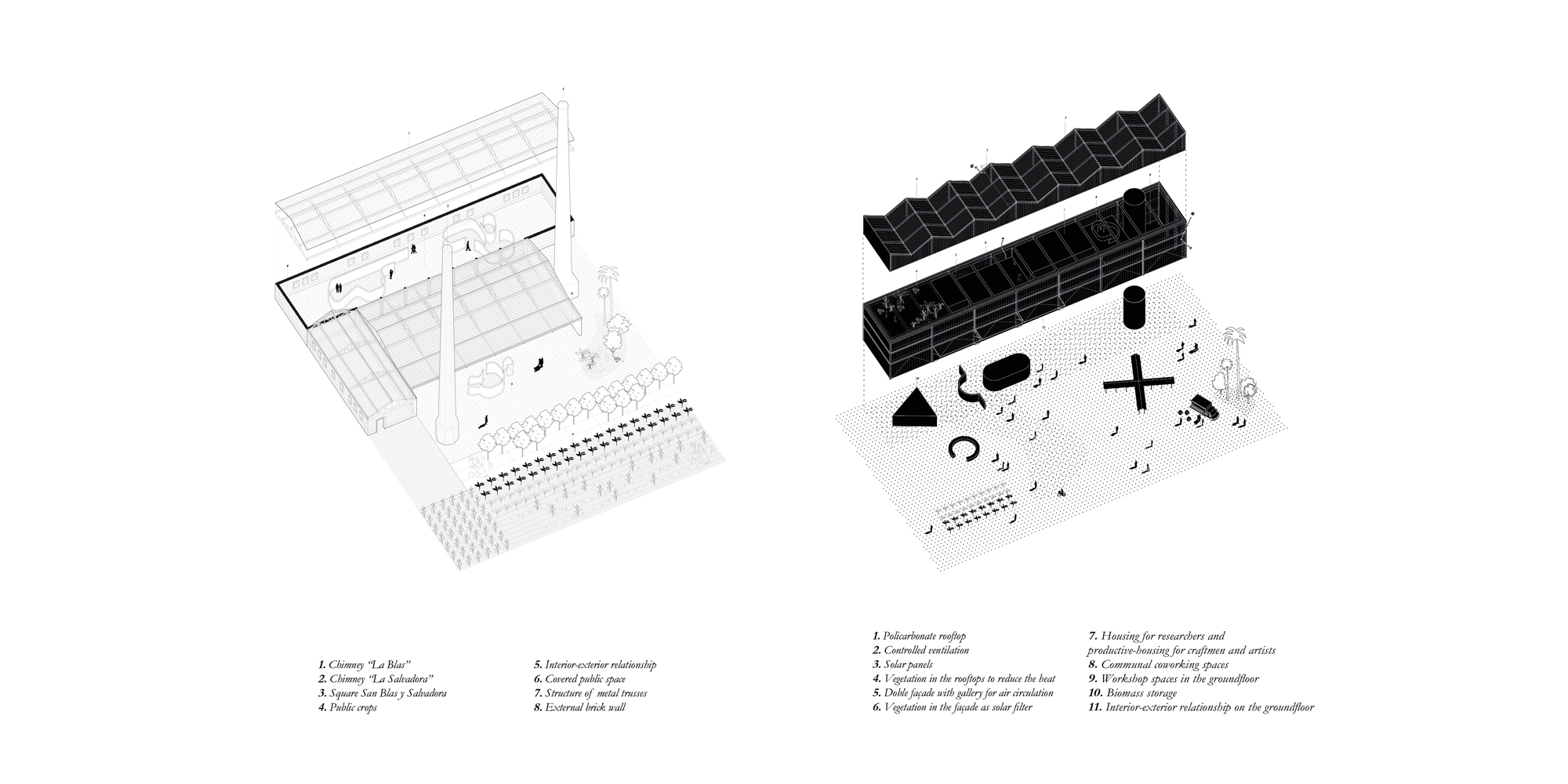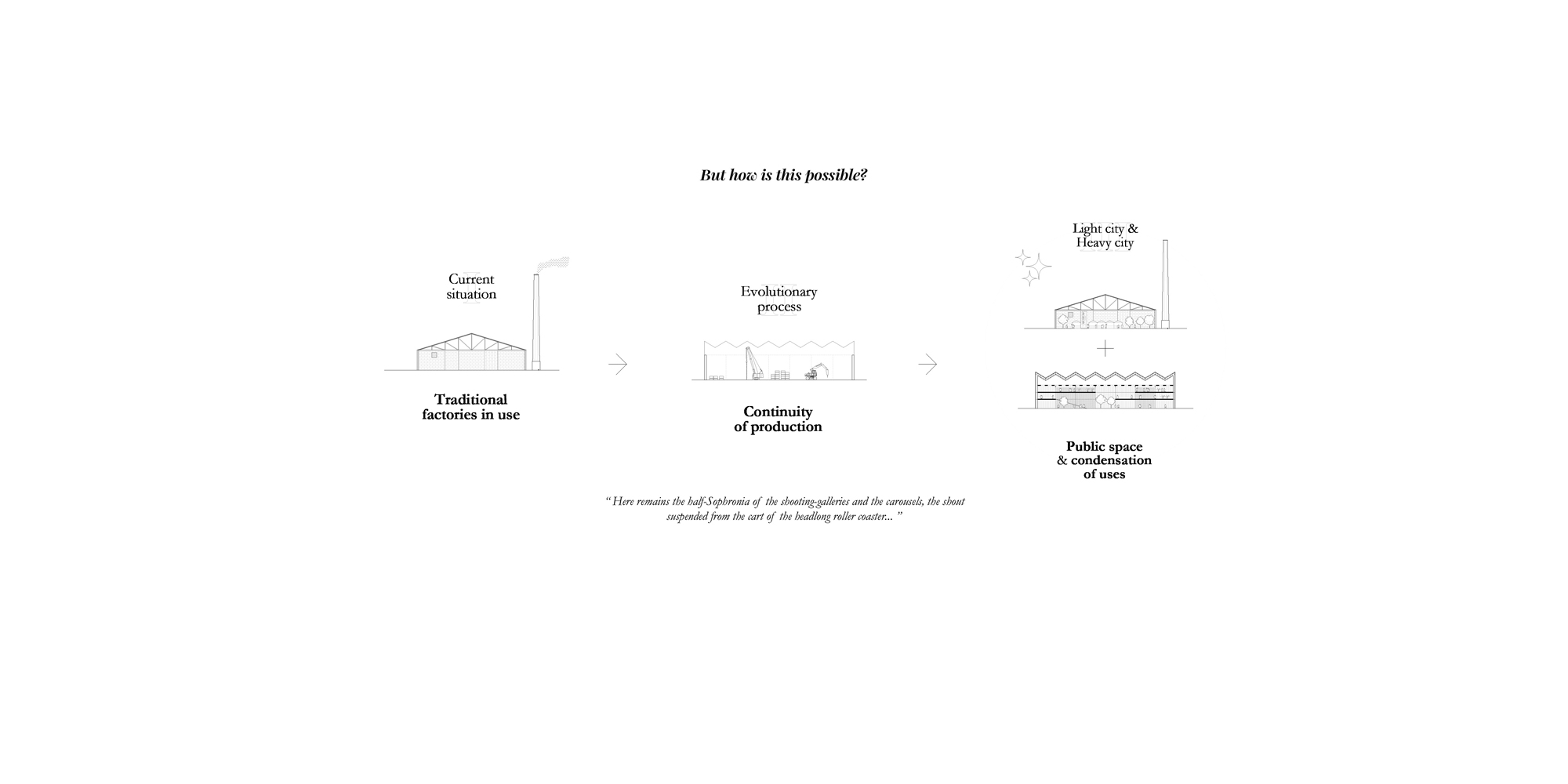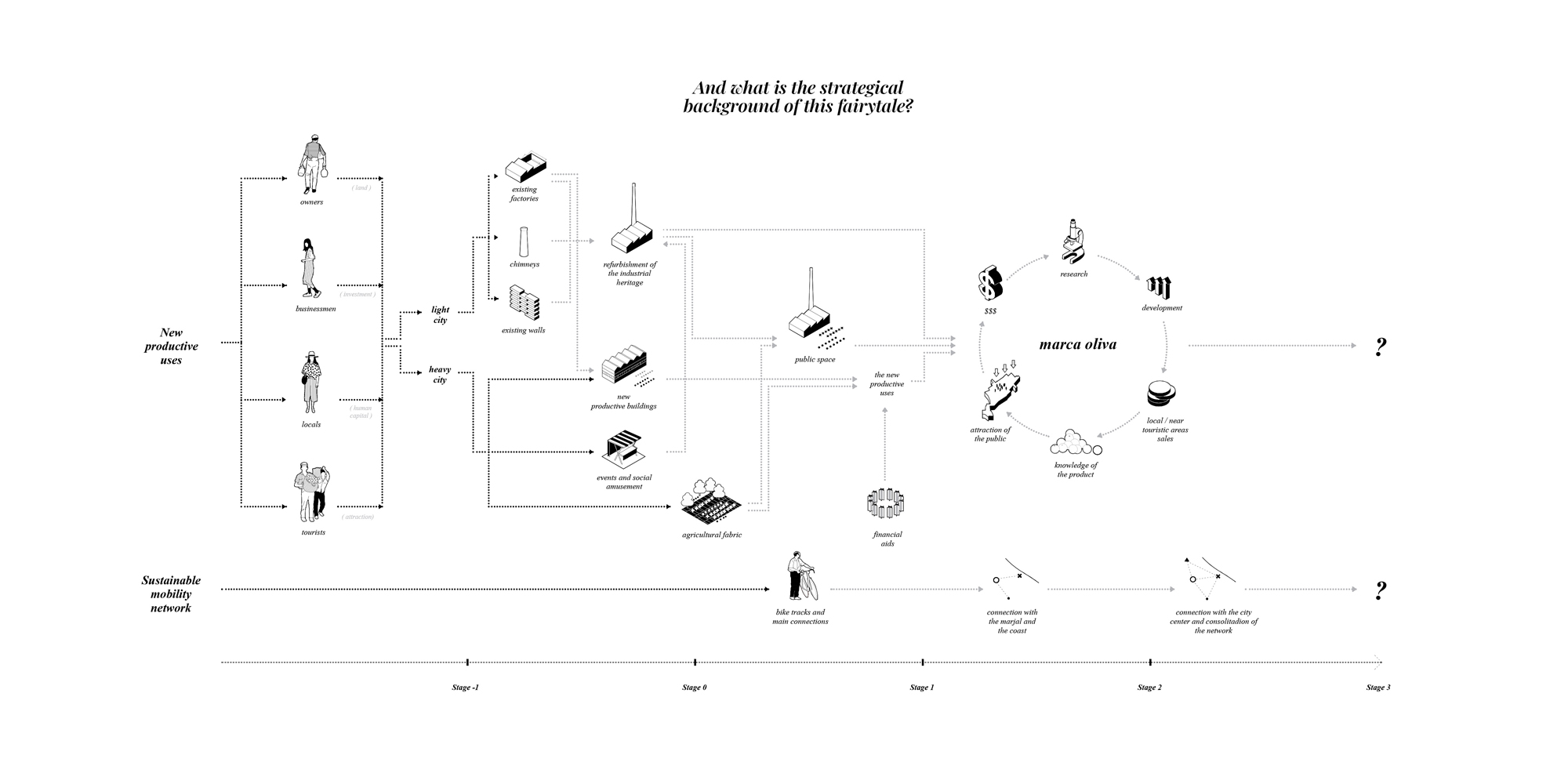☉ A tale of two cities - The fairytale approach for urban regeneration is a proposal by à la sauvette developed in 2019. It is located in Oliva Spain in an industrial setting. Its scale is extralarge with a surface of 177.380 sqm.
The fairytale approach for urban regeneration
The city of Oliva is divided into two halves. The half that goes away spends little time in Oliva, and each time it steps less. It spends time enjoying its coastline and beaches, but does not normally enter its urban centre. The half that stays sees how people come and go, but no connections are created, life between them remains the same. More people are coming, fewer people stay. The project proposes to create proximities between the people who come and the people who stay. Instead of proposing rigid planning and uses, it bets on creating an infrastructure on which connections can be made.
The monoculture paradox
Oliva has always understood its economic situation as a commitment to monoculture. Traditionally, focusing its efforts on the cultivation of orange and during the last century, specialized in the ceramics industry. However, this activity ceased, and Oliva now focuses its efforts on attracting tourism, hoping that this will be its next ‘monoculture’ and that currently supports most of the economic production. Unlike industrial or agricultural activity, coastal tourism concentrates its economic potential in just under three months a year. Therefore, it is fundamental to understand and put oneself in the place of each of the two Olivas, the one that stays and the one that goes.
“The more people come, the more people will be attracted. The more people come, the more people there are.” That is the leitmotiv. It is not only a question of achieving a greater influx of people, but offering the current inhabitants of Oliva an opportunity to connect with visitors, which will result in more diversity of economic and professional opportunities, trying to put an end to the drain of young talent that the municipality is currently suffering. It is intended that, on the one hand, there will be a new economic impulse and on the other hand, the young people trained in the region will be given the opportunity to stay there, thus consolidating the socio-economic fabric.
Sun and beach tourism is currently the main reason, but Oliva can offer much more. With the variation of attractions is not only intended to increase the number of visitors but also to diversify their profile, attracting visitors of short, medium, and long-stay, each one finding different reasons to reach the municipality of Oliva.
A city that is two halves
The aim is to combine the three basic pillars of the municipality’s economy to multiply the opportunities for connection: tourism, agriculture, and industry. On these three pillars, we propose the construction of the ‘Oliva brand’, which reflects the identity of the place.
The aim is to give value to the ceramics tradition of the area, the past and present agricultural, but with a focus not only on food production but also as a field of research and technological development, and of course the landscape context of the area, both coastal and inland; thus creating a three-way productive fabric that enhances the area as a visitable destination with a sustainable and innovative philosophy.
Population dynamics change and, as is well seen in this case, there is a need for an urbanism of flows that is adaptable to the new socioeconomic processes that are becoming faster and faster. Gilles Deleuze and Félix Guattari call this ‘plan of consistency’, as a differentiation from the traditional urban plan, and in it, they expose the need for hybrid elements, which are defined as the elements that establish a certain order in complex systems.
The project proposes a system of flows and the coexistence of the ‘two cities’ or the ‘two types of people’, those who arrive and those who stay. It is of special importance to define the permanent and transitory systems, those that are transformed according to the people that arrive and those that stay for the people that are already there. The process shapes the area.
The factories belonging to the ceramics industry, a priori heavy and fixed, with their chimneys and their brick walls, could be reimagined as ‘transitory spaces’, giving them the character of a common, changing space, enhancing their condition of public domain infrastructure instead of simply replacing their original use. On the other hand, the new lighter buildings could be used as ‘fixed elements’, new typologies at the disposal of the inhabitants, that densify the area programmatically and thus establishing the infrastructures needed for the creation of productive uses.
With these guidelines, the scenario in which the proposal moves is that of being a process and not a result, with an investment that will grow successively as the activity develops, thus creating a phased dynamic process.
